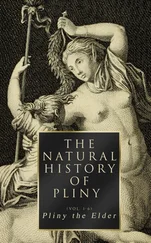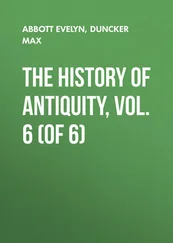Max Duncker - The History of Antiquity, Vol. 4 (of 6)
Здесь есть возможность читать онлайн «Max Duncker - The History of Antiquity, Vol. 4 (of 6)» — ознакомительный отрывок электронной книги совершенно бесплатно, а после прочтения отрывка купить полную версию. В некоторых случаях можно слушать аудио, скачать через торрент в формате fb2 и присутствует краткое содержание. Жанр: foreign_antique, foreign_prose, Историческая проза, на английском языке. Описание произведения, (предисловие) а так же отзывы посетителей доступны на портале библиотеки ЛибКат.
- Название:The History of Antiquity, Vol. 4 (of 6)
- Автор:
- Жанр:
- Год:неизвестен
- ISBN:нет данных
- Рейтинг книги:5 / 5. Голосов: 1
-
Избранное:Добавить в избранное
- Отзывы:
-
Ваша оценка:
- 100
- 1
- 2
- 3
- 4
- 5
The History of Antiquity, Vol. 4 (of 6): краткое содержание, описание и аннотация
Предлагаем к чтению аннотацию, описание, краткое содержание или предисловие (зависит от того, что написал сам автор книги «The History of Antiquity, Vol. 4 (of 6)»). Если вы не нашли необходимую информацию о книге — напишите в комментариях, мы постараемся отыскать её.
The History of Antiquity, Vol. 4 (of 6) — читать онлайн ознакомительный отрывок
Ниже представлен текст книги, разбитый по страницам. Система сохранения места последней прочитанной страницы, позволяет с удобством читать онлайн бесплатно книгу «The History of Antiquity, Vol. 4 (of 6)», без необходимости каждый раз заново искать на чём Вы остановились. Поставьте закладку, и сможете в любой момент перейти на страницу, на которой закончили чтение.
Интервал:
Закладка:
CHAPTER IV.
THE FORMATION AND ARRANGEMENT OF THE ORDERS
The Aryas had now advanced far beyond the borders of their ancient territory; from the land of the Panjab they had conquered and occupied the valley of the Ganges. The plundering raids and feuds which had occupied the tribes on the Indus had passed away, and in their place came the migration, conquest, settlement, the conflict for the conquered districts, and a warlike life of considerable duration. It was only when attempted in large masses that attack or defence could be successful. By this means the tribes grew up into larger communities; the small unions of tribes became nations, which divided the land of the Ganges among them. The tribal princes were changed into leaders of great armies. The serious and important nature of the tasks imposed upon them by the conquest and the settlement, by the need of security against the ancient inhabitants or the pressure of their own countrymen, placed in the hands of these princes a military dictatorship; so that in the new districts which were won and maintained under their guidance, the princes had a much greater weight, and a far wider power, than the heads of the tribes on the Indus, surrounded by the warriors of their nations, had ever ventured to exercise. Thus arose a number of monarchies in the conquered land. Beside the Matsyas on the western bank of the Yamuna, and the Çurasenas, who lay to the south in the cities of Mathura and Krishnapura (in the place of the Yadavas), stood the kingdom of the Bharatas and Panchalas on the upper course of the Yamuna and Ganges. These nations were governed by the dynasty of Pandu, at first from Hastinapura on the upper Ganges, and afterwards, apparently after the accession of the eighth successor of Parikshit, from Kauçambi, which lies on the lower Yamuna, about 30 miles above the confluence of the Yamuna and the Ganges. 151Further to the east, and to the north of the Ganges, the Koçalas were situated on the Sarayu; the seat of their kingdom was Ayodhya. Still further to the east were the Videhas, whose rulers resided at Mithila (Tirhat). On the Ganges, below the confluence with the Yamuna, were the kings of the Kaçis at Varanasi (Benares), and farther to the east still, the kings of the Angas at Champa, also on the Ganges. To the south of the river the Magadhas had won a large district; their kings resided at Rajagriha (king's house) on the Sumagadhi. 152Thus in the east there was a complex of tolerably extensive states, under a monarchy which owed its origin to military leadership in the war, and its permanence to the success of the settlement; a state of things forming a complete contrast to the old life of the tribes of the Aryas in the land of the Panjab.
Such a powerful, extensive, and complete alteration of the forms of the civic community, combined with the new conditions of life rendered necessary on the Ganges, must have exercised a deeply-felt influence on the Aryas. The conquest, establishment, and arrangement of extensive dominions had created the monarchy, but at the same time a warlike nobility had sprung up beside the princes in these contests. The land of the Ganges had been won by the sword and divided among the victors. No doubt those who had achieved most in the battles, and stood nearest to the princes, received the best reward in land and slaves, in captives or dependants among the old population. In this way a number of families with larger possessions became distinguished from the mass of the population. In these the delight in arms and war became hereditary; the feeling of the father passed to his son along with his booty, his horses, and his weapons. He could apply himself to the chase, or to the exercise of arms; he was raised above all care for his maintenance, or the necessity of work. He possessed land and slaves to tend his herds or till his fields. From the later position of this order, we might assume that a nobility practised in the use of arms, the Rajnayas, i. e. the princely, the Kshatriyas, i. e. the wealthy or powerful, surrounded the princes in the Ganges in greater numbers and with greater importance than the warriors of pre-eminent position, who in the land of the Indus had aided the tribal princes in battle, in council, and in giving judgment.
The battles for the possession of the new territory were over, and the mutual pressure of the Arian tribes had come to an end. War was no longer a constant occupation, or carried on for existence; it was only at a distance, on the borders of the new states, that battles took place, either to check the incursions of the old inhabitants from the mountains or to extend the territory already possessed. Hence the majority of the settlers preferred to till their lands in peace, and left it to those for whom booty or glory had a charm, to follow their kings in beating back the enemy at the borders, or making an attack on foreign tribes and countries. Those who had to work the soil with their own hands gladly gave up the precedence to this military nobility; the king might fight out his wars with their help, if under such protection the herds could pasture in peace, or the fields be tilled without interruption. It was time enough for the peasants to take arms when the nobles who surrounded the princes were no longer able to keep off the attacks of the enemy. No doubt the Kshatriyas formed a still more favourable estimate of themselves and their position. Busied with their arms, their horses, or the chase, they became proud, and despised the work of the peasant, paying little respect to that laborious occupation in comparison with their own free and adventurous life.
Owing to their close relation to the king, to their weapons, and their possessions, the Kshatriyas took the first place in the new states on the Ganges. This they maintained beyond a doubt for centuries in the kingdom of the Bharatas, among the Matsyas and Çurasenas, the Koçalas, Kaçis, Videhas, Magadhas. In the royal houses and the families of the Kshatriyas the achievements of the forefathers continued to live; they preserved the recollection of the wars of conquest, the struggles for the possession of the lands, which they now held. At their festivals and banquets the minstrels sang to them the songs of the ancient heroes, their ancestors, their mighty deeds, their sufferings and death; they extolled the delight in battle and the martial spirit, the knightly temper and mode of combat, and thus at length arose the poem of the great war. If our assumption, that the conquest of the land on the Ganges may have been completed about the year 1400 B.C., is tenable, we might ascribe to the two following centuries the rise of the Kshatriyas, the establishment of their prominent position in the newly-conquered territory, and to the next century the composition of the songs of the great war in their oldest form.
In the development of other nations the periods of wide expansion, the rise of the military element, and protracted war, usually repress the influence and importance of the priesthood, but among the emigrant Aryas this could not have been the case. We have already seen that among them the contest of sacrifices preceded the contest of arms. The victory fell to the side whose sacrificial bowl Indra had drained. As the correct offering and correct invocation compelled the gods to come down and fight for the nation whose sacrifice they received, the priests were naturally most indispensable in the time of war. The singers of the sacrificial hymns which caused the gods to come down were identical among the Indians with the priests, and were in fact the priests in the stricter sense. With them, minstrel and priest had one name – Brahmana, i. e. one who prays. The hymns of the Vedas showed us how the princes were commanded to set before them at the sacrifice a holy minstrel to offer prayer, and to be liberal to him. The minstrels who accompanied the emigrant tribes to the Yamuna and Ganges had, in those turbulent times, to sing songs of war and victory, as well as to offer prayers at sacrifice, and afterwards to compose the poems on the deeds of the heroes. If the result was that no more new invocations were composed in the period of heroic song, the minstrels nevertheless preserved the old invocations which they had brought with them from the land of the Indus very faithfully. They had imported the ancient worship of their native deities into the new land; they had to preserve the old faith and the old rites at a distance from their ancient home, to offer sacrifice in the old fashion, and thus to win and retain the favour of the gods for the emigrants in their new abode. In the families which claimed to spring from Atri and Agastya, from Bhrigu and Gautama, from Kaçyapa and Vasishtha, one generation handed down by tradition to another the prayers which they had preserved as effectual, and which had been composed, or were thought to have been composed, by these celebrated minstrels, the rites which were considered requisite for the efficacy of the sacrifice, for winning the favour and help of heaven. It is obvious that these families did not consist exclusively of the actual descendants of the supposed tribal ancestor. In ancient times the family is the only form, as yet known, of community and instruction. As the prayers pleasing to the gods and the form of sacrifice could only be learnt from a minstrel and priest, those who had this object in view must seek for admittance into a priestly family, and must be adopted as disciples by a priest in the place of sons. 153Such admittance was naturally most sought after in the case of that race which bore the most famous name, which was supposed to spring from the most celebrated sacrificer of early times, and claimed to possess his songs. Among the "sons of Vasishtha," who, according to the hymn of the Veda (p. 67), sacrificed for the Tritsus, in the race of the Kuçikas to which Viçvamitra belonged, and the other priestly races mentioned in the Veda, we must consider that we have just as much disciples claiming to be descended, or being actually descended, from these supposed ancestors, as relations connected by blood. The importance of these families who preserved the ancient customs and prayers, and worshipped the ancient gods, must have risen in the new territory in proportion to the length of the period between the emigration from the Indus and the present. In different districts the kings regarded the sacrifice and supplication of different races as the most pleasing to the gods. Among the Koçalas, according to the Ramayana and the Puranas, Vasishtha was the priest of the kings; among the Bharatas, the Kuçikas; among the Videhas and Angas, the Gautamas. 154The amalgamation of the various tribes into larger nations had the effect of bringing the priestly families into combination and union, and thus they had the opportunity of exchanging the knowledge of their possession of hymns and ritual. This union taught them to regard themselves as a peculiar order. Princes and nations are always inclined to recognise the merit of those who know how to win for them the favour of the gods, good fortune and health by prayer and sacrifice.
Читать дальшеИнтервал:
Закладка:
Похожие книги на «The History of Antiquity, Vol. 4 (of 6)»
Представляем Вашему вниманию похожие книги на «The History of Antiquity, Vol. 4 (of 6)» списком для выбора. Мы отобрали схожую по названию и смыслу литературу в надежде предоставить читателям больше вариантов отыскать новые, интересные, ещё непрочитанные произведения.
Обсуждение, отзывы о книге «The History of Antiquity, Vol. 4 (of 6)» и просто собственные мнения читателей. Оставьте ваши комментарии, напишите, что Вы думаете о произведении, его смысле или главных героях. Укажите что конкретно понравилось, а что нет, и почему Вы так считаете.












